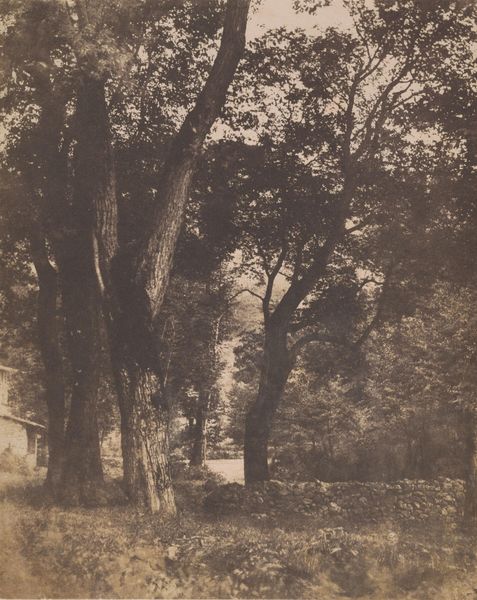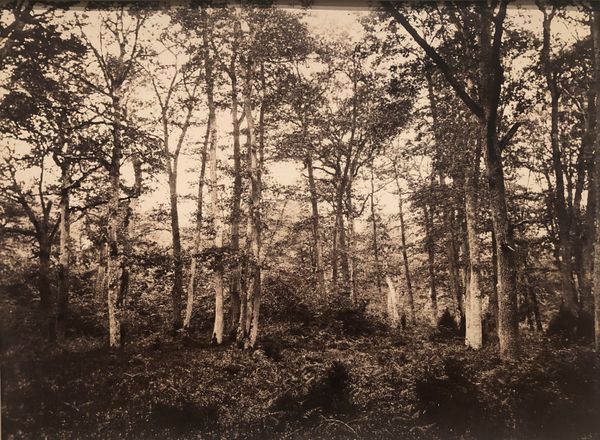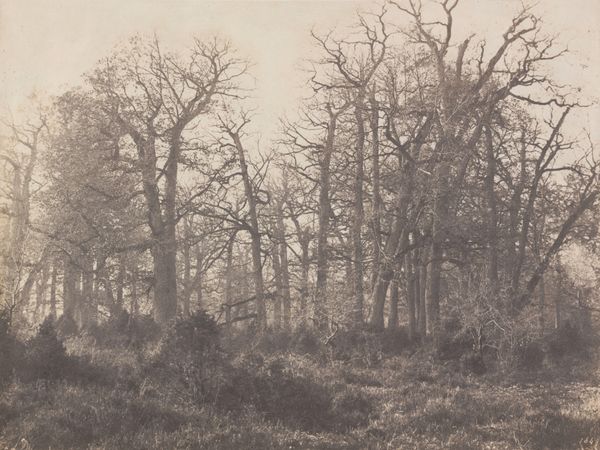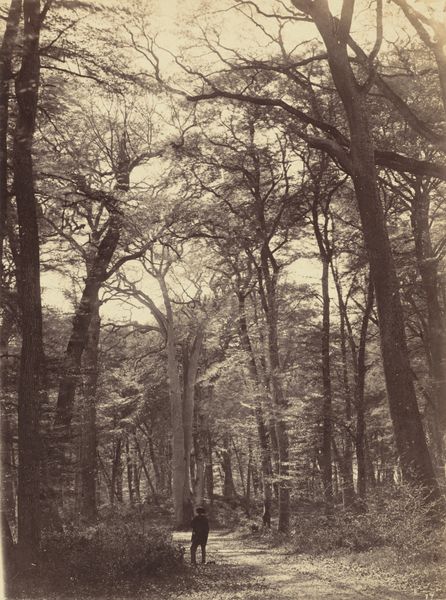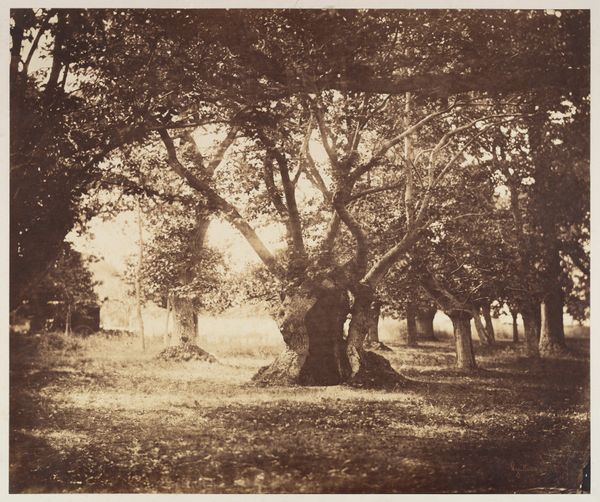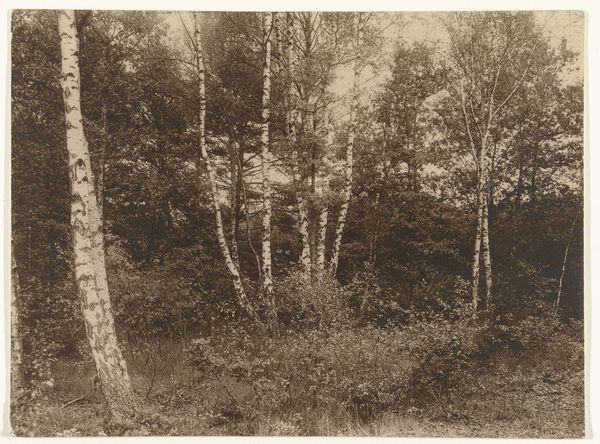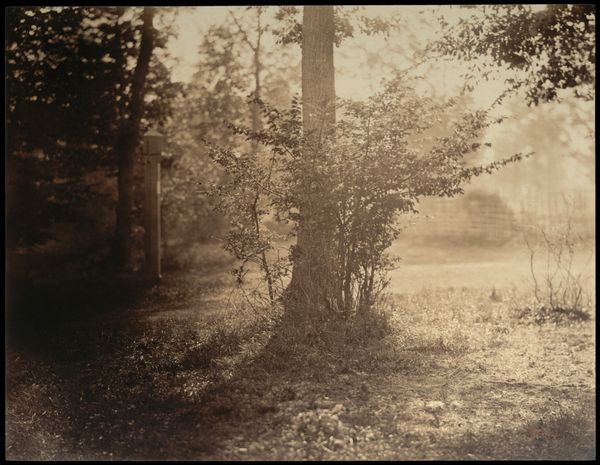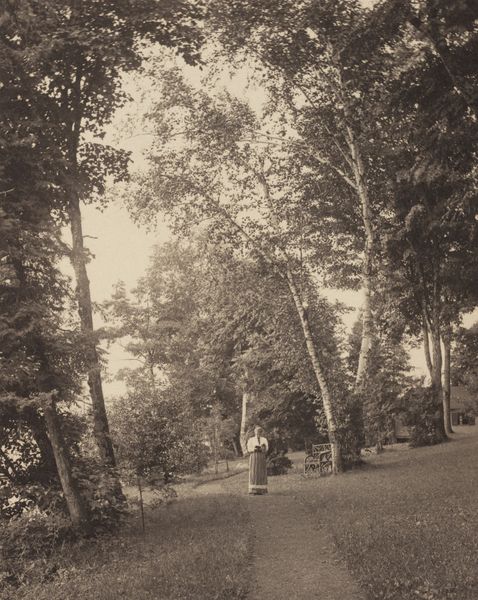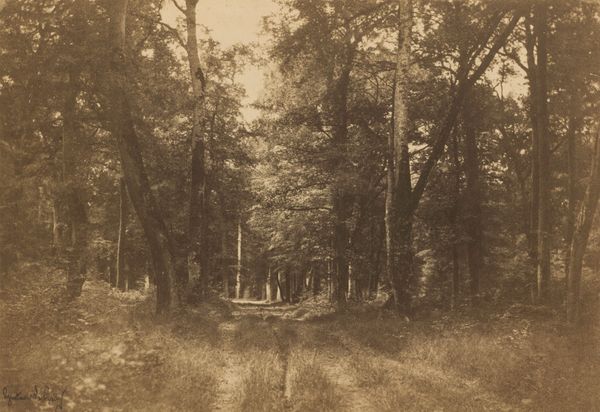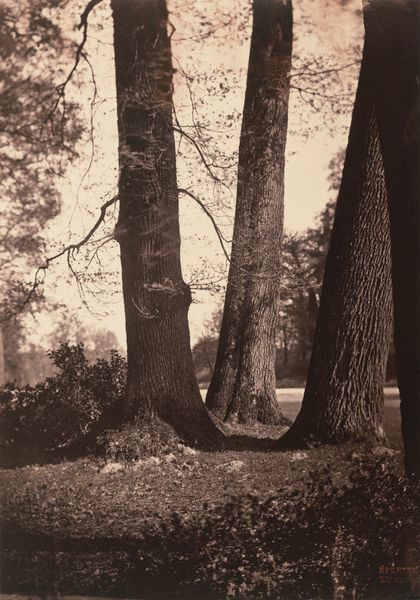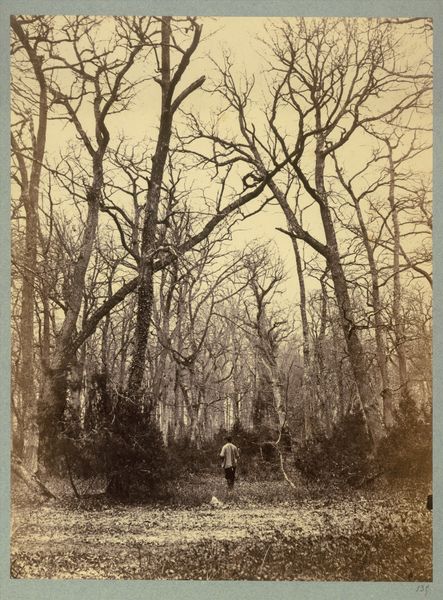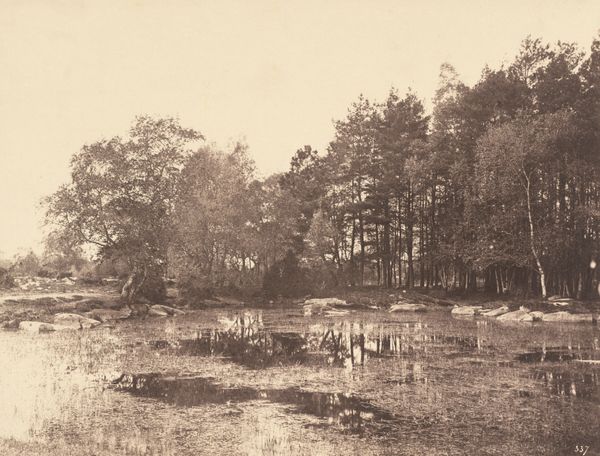
Dimensions: sheet (trimmed to image): 15.2 × 20.3 cm (6 × 8 in.) page size: 27.3 × 34.4 cm (10 3/4 × 13 9/16 in.)
Copyright: National Gallery of Art: CC0 1.0
Curator: This is "Autumn," a gelatin-silver print, likely captured by Alfred Stieglitz sometime between 1893 and 1896. Editor: The first word that springs to mind is wistful. It feels shrouded, quiet. The palette, verging on monochromatic, heightens that sense of stillness and maybe a touch of melancholy. Curator: I'd agree about stillness. Stieglitz, a major force in promoting photography as fine art, often used soft focus and printing techniques like this to imbue his photographs with a painterly, almost impressionistic quality. We see it particularly here through his involvement in Pictorialism, emulating painting and etching. But why this retreat to sentiment? Editor: Well, let's consider the historical context. The late 19th century witnessed rapid industrialization, urbanization and growing class divides. Images like this, steeped in romanticism, can be read as a yearning for a simpler, perhaps imagined, past – a resistance to those societal shifts and an embrace of nature. But also it brings into sharp focus which kind of past? Who could embrace nature and have the leisure to appreciate this view in contrast to those who actually had to engage in the day to day struggles of countryside life. Curator: I see your point, definitely a key point, especially given Stieglitz's own privileged position. His photography, though visually striking, often overlooked the realities faced by many during this period. Still, looking closer at how those birches are posed, you can appreciate how Stieglitz was part of broader discussions around artistic nationalism which grew more strident during the Wilhelmine era. I always think this body of work seems to seek the true Germany of Romantic art. Editor: And in what sense the true Germany? Can we consider Stieglitz´s lens an act of creating this ideal vision of nationalism? Curator: Well, I wouldn't go that far, but I recognize how photography plays a complex game in visualizing and circulating certain ideas and values about both land and ownership. So even though "Autumn" appears to offer a placid escape, it invites deeper questioning about what – and whom – it excludes. Editor: So, we begin with an image evoking a sort of peaceful, perhaps apolitical moment and then quickly realize just how tangled those interpretations really are. Curator: Exactly, a seemingly simple landscape becomes a potent site of historical and cultural investigation.
Comments
No comments
Be the first to comment and join the conversation on the ultimate creative platform.
